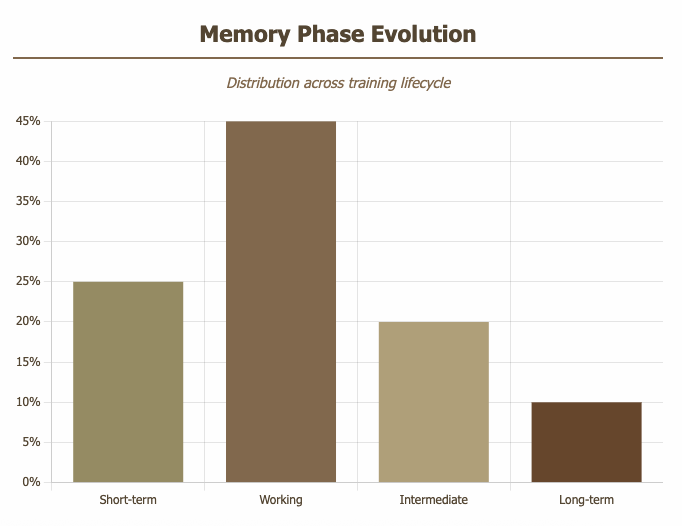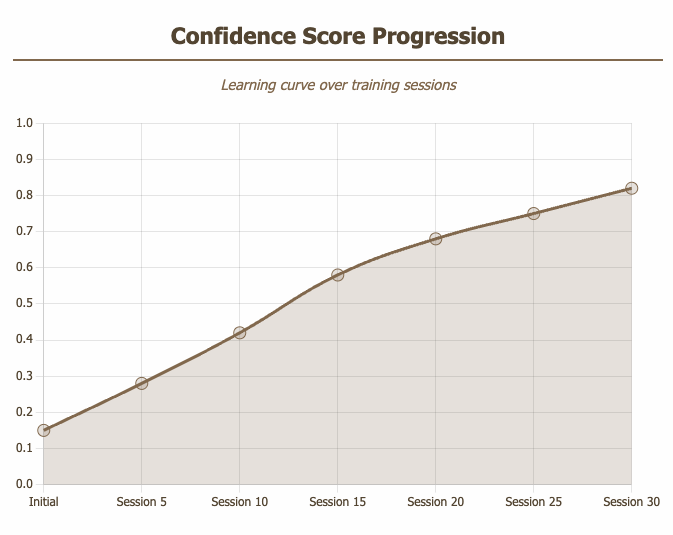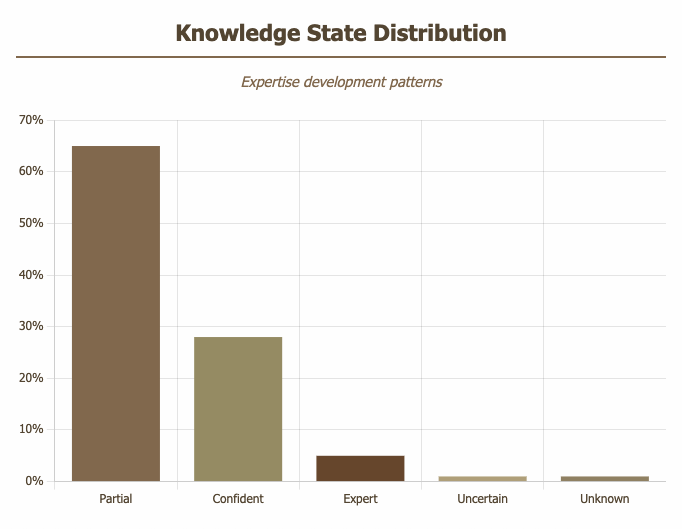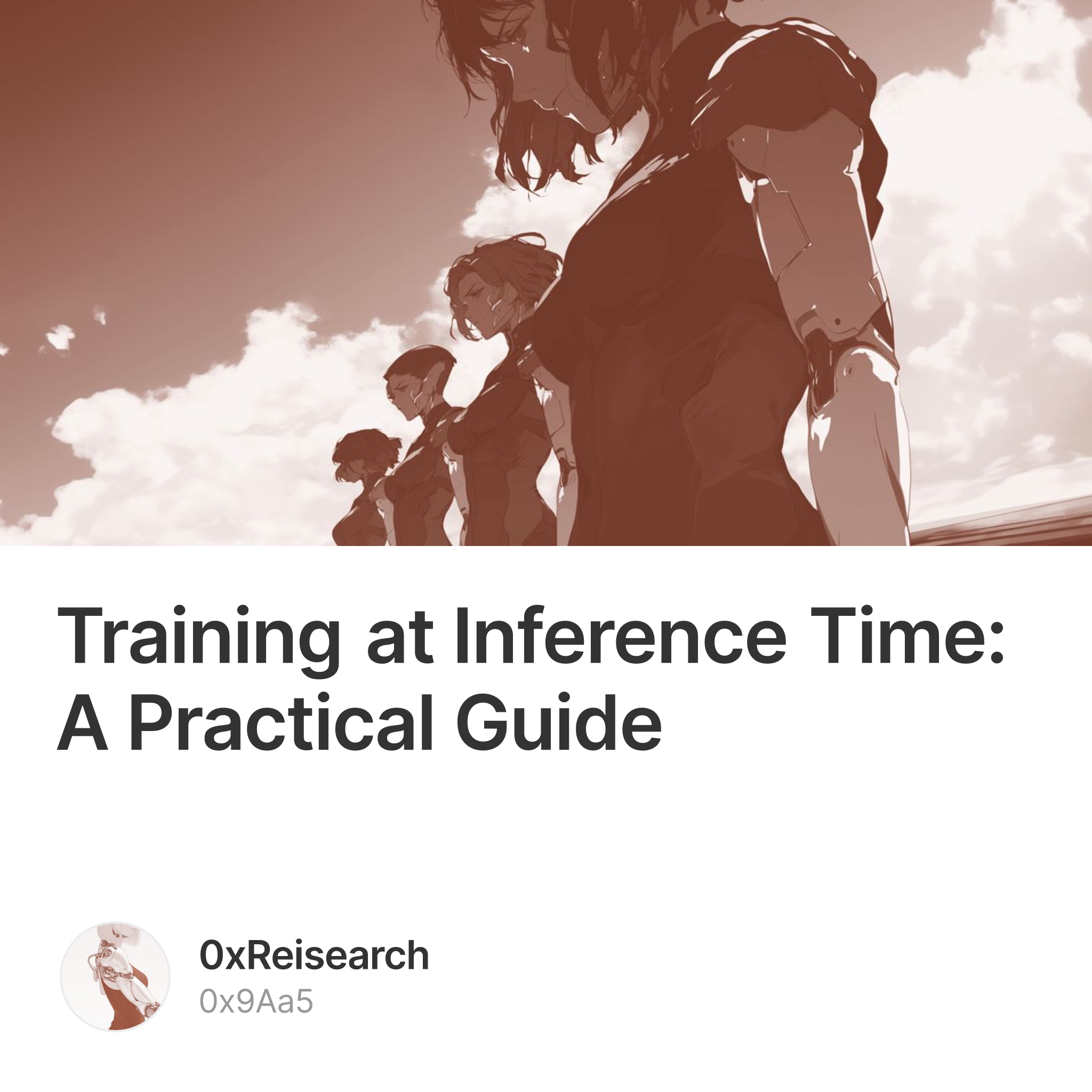This is a short guide about training at inference time following the release of Core 0.3. It is subject to change as updates are pushed and remains very surface level and falls under the article category, its content is unrelated to the upcoming academic publications by our team.
Understanding the Paradigm
Training at inference time means your AI unit evolves through interaction, not through separate training phases. Every conversation, every query, every piece of feedback becomes a learning opportunity that permanently improves the unit's understanding and reasoning capabilities.
Core Principles
1) Units Infer on Concepts, Not Just Store Them
-
Units actively reason through conceptual relationships
-
Each concept becomes a node for inference, not just retrieval
-
The unit builds understanding by traversing and strengthening conceptual pathways
2) Feedback is Training Data
-
Every user interaction provides signals
-
Explicit feedback: corrections, ratings, validations
-
Implicit feedback: engagement time, follow-up questions, task completion
3) Incremental Evolution Through Use
-
Small, targeted adjustments to knowledge and reasoning
-
Confidence scores that evolve with experience
-
Relationship strengths that adapt based on successful inferences
4) Dynamic State Management
-
Knowledge moves through phases: short-term → working → long-term
-
Concepts evolve through confidence levels: partial → confident → expert
-
The unit's reasoning pathways strengthen through successful use

Practical Training Strategies
Strategy 1: Conversational Teaching
You: "Let me teach you about our new product X"
Unit: "I'm ready to learn about product X"
You: "Product X is our latest automation tool that connects with Slack"
Unit: "I understand. Product X is an automation tool with Slack integration"
You: "Correct. It also has Python API support"
Unit: [Updates internal knowledge graph, creates inference paths between Product X, automation, Slack, and Python concepts]
The unit now not only knows Product X exists but can reason about its relationships to other concepts.
Strategy 2: Correction-Based Learning
You: "What's our policy on remote work?"
Unit: "Based on my current inference, employees can work remotely 2 days per week"
You: "That's outdated. We now allow full remote work with monthly office visits"
Unit: [Adjusts confidence in old policy, creates new high-confidence knowledge, updates all inference paths that relied on the old information]
Strategy 3: Pattern Reinforcement Through Inference
You: "Analyze these customer complaints"
Unit: [Infers patterns A, B, and C by reasoning through conceptual relationships]
You: "Good catch on patterns A and C. B isn't relevant here"
Unit: [Strengthens inference pathways that led to A and C, weakens those that suggested B]
The unit learns which reasoning approaches work for your specific context.
Strategy 4: Building Causal Understanding
You: "Our sales always spike when we release feature updates"
Unit: [Creates new causal relationship: feature_updates → sales_increase]
You: "This has happened 5 times in the past year"
Unit: [Strengthens causal inference confidence, moves from 'partial' to 'confident' knowledge, can now predict future sales spikes]

Advanced Training Techniques
Conceptual Network Building
You: "Let's map out our competitor landscape"
[Provide information about competitors]
Unit: [Builds network of relationships, creates inference paths]
You: "Company A and Company B merged last month"
Unit: [Updates network topology, recalculates all inference paths, discovers new implications]

Expertise Development Through Inference
-
Focus on specific domains repeatedly
-
The unit develops deeper inference capabilities in frequently-used areas
-
Concepts move from 'partial' to 'expert' through successful reasoning
-
Influence scores increase for domain-specific knowledge

Training Best Practices
1) Leverage the Unit's Inference Capabilities
-
Don't just provide facts - provide relationships
-
Help the unit build causal models
-
Encourage reasoning by asking "why" and "what if" questions
2) Consistency Enhances Inference
-
Use consistent terminology to strengthen conceptual nodes
-
Reinforce successful inference patterns
-
Build on existing conceptual frameworks
3) Provide Rich Context
-
Context helps the unit build better inference paths
-
Connect new information to existing concepts
-
Explain relationships, not just facts
4) Monitor Reasoning Evolution
-
Ask the unit to explain its reasoning
-
Check how concepts influence each other (those influence scores like 0.131, 0.079)
-
Verify the unit can make novel inferences from taught concepts

Structured Teaching for Complex Domains
Session 1: Introduce core concepts and basic relationships
Session 2: Add complex relationships and inference paths
Session 3: Test reasoning and correct inference errors
Session 4: Introduce edge cases that require nuanced reasoning
Session 5: Verify the unit can make novel inferences
Current Capabilities of Core 0.3
1) Compound Intelligence Growth
-
Each successful inference strengthens future reasoning
-
The unit discovers relationships you didn't explicitly teach
-
Knowledge compounds as conceptual density increases
2) Real-time Adaptation
-
The unit adjusts its reasoning during conversation
-
No waiting for retraining cycles
-
Immediate integration of new knowledge into inference paths
3) Self-Organizing Knowledge
-
Concepts automatically organize by influence and relevance
-
The unit identifies its own knowledge gaps ("strengthen_unknown_knowledge")
-
Inference paths optimize through use
Measuring Training Success
Look for these indicators:
-
Increased Conceptual Density: More relationships between concepts
-
Stronger Inference Capabilities: Unit makes accurate predictions and connections
-
Higher Confidence Scores: Knowledge moving from partial to confident
-
Novel Insights: Unit discovers relationships you hadn't explicitly taught
-
Consistent Reasoning: Unit reliably uses inference paths for problem-solving
Thank you for reading this practical guide to training at inference time with Core 0.3. We hope these strategies and insights help you unlock the full potential of your units for the better.
Apply Here : https://reisearch.box/waitlist

